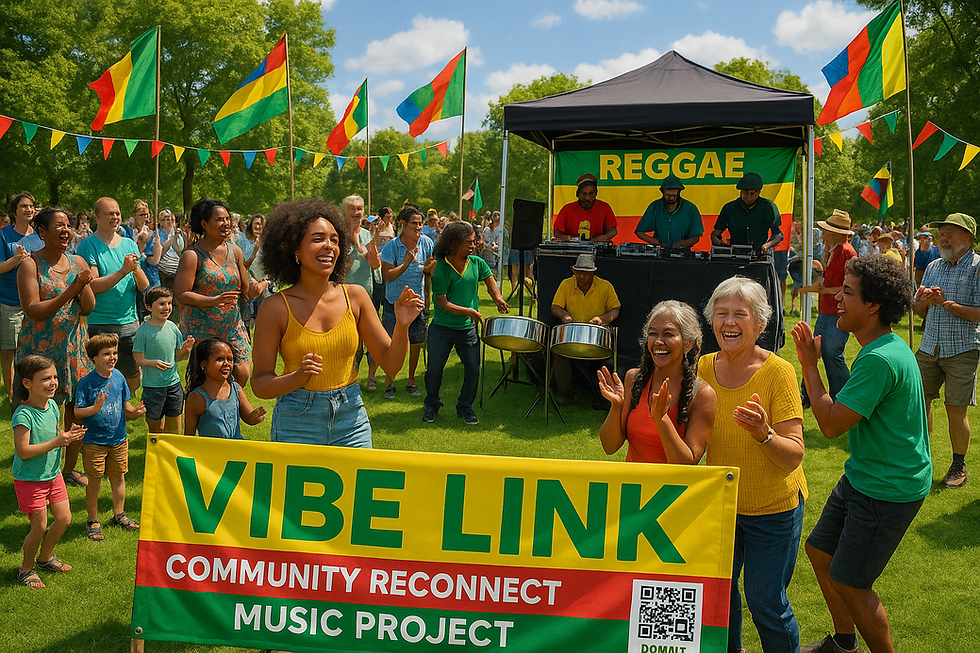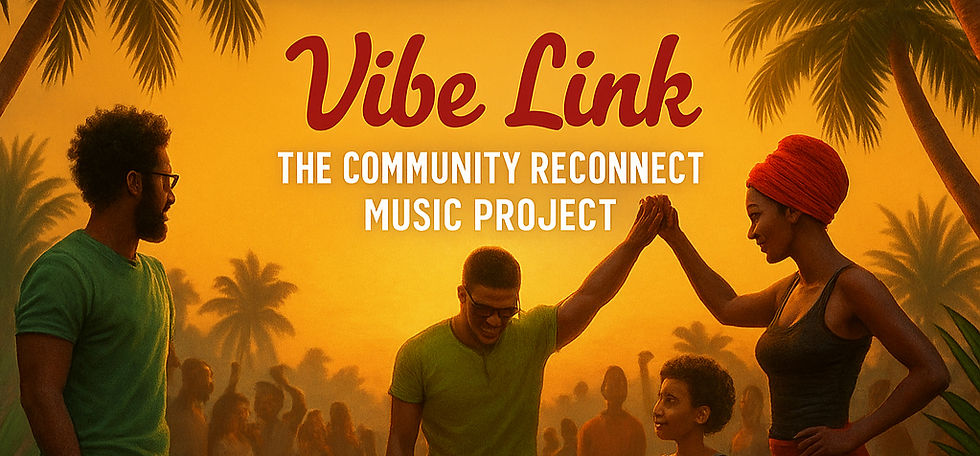Harmonizing Our Differences Reconnecting Communities Through Music and Dance
- jckspromotion
- Jun 24
- 4 min read
Updated: Jun 26
In today's fast-paced world, many communities struggle to maintain connections. Cultural differences, varying beliefs, and differing lifestyles can create barriers that keep people apart. Yet, one universal language can bring us together: music and dance. These art forms possess incredible power to nurture understanding and connection among individuals. In this blog post, we will explore how music and dance can help bridge divides, foster healing, and promote a sense of community.
The Power of Music
Music is a vital part of every culture, uniting people through shared experiences. From traditional folk songs that document local history to contemporary hits that spark celebration, music plays a key role in defining cultural identity.
The magic of music is found not only in its numerous styles but also in its ability to evoke emotions and create lasting memories. When people gather to sing or play instruments together, they share joyous moments that foster personal connections. For instance, a community choir event might bring together 100 participants, each singing songs that reflect their individual backgrounds while creating harmonious experiences. This collective activity nurtures a sense of belonging, encouraging greater interaction and understanding among individuals.
Dance: A Universal Expression
Dance, like music, serves as a powerful means of expression that spans different styles and traditions. Whether through traditional folk dances or modern jazz, dance allows individuals to communicate emotions that words often cannot capture.
Community dance events, such as local festivals and cultural celebrations, provide opportunities for engagement in shared activities. For example, a local festival might feature performances from different cultural groups, showcasing salsa, tango, and traditional African dance. These gatherings offer platforms for individuals to appreciate each other's unique heritages while offering a chance to express their own. Through dance, communities can celebrate diversity, engage in meaningful exchanges, and build stronger bonds.
Case Studies: Successful Community Programs
Communities worldwide have successfully utilized music and dance programs to enhance social unity. One notable initiative, "Music for Peace," brings musicians from various backgrounds together to create and perform peace-themed compositions. These events not only entertain but also foster dialogue, with studies showing that participants report a 60% increase in understanding of others after attending such performances.
Similarly, community dance programs have effectively united diverse age groups. Workshops offering styles from salsa to hip-hop encourage individuals to explore new experiences. Participants often form lasting friendships through their shared love of rhythm and movement. For instance, a community dance workshop can see a diverse group of 50 to 60 individuals, bonding over the joy of learning a new dance together.

Interactive Workshops: Building Bridges
A practical method for reconnecting communities through music and dance is to organize interactive workshops accessible to all ages and skill levels. These workshops allow participants to discover various musical genres and dance styles from around the world, providing insight into different cultures.
Through workshops, participants can engage creatively and develop pride in their cultural backgrounds. By inviting local artists to lead sessions, communities gain unique insights while enriching the overall experience. Workshops often conclude with community showcases, where participants perform for each other, fostering positivity and support.
Celebrating Differences: Community Festivals
Community festivals focused on music and dance create lively platforms for local artists and performers. These festivals not only provide entertainment but also educate attendees about diverse cultural traditions.
By organizing cultural festivals, communities can create inclusive environments that encourage participation from everyone. Attendees can enjoy various performances alongside workshops, food stalls, and art exhibits, making the festival a rich display of cultural diversity. For instance, a multi-day festival could feature performances by local artists on multiple stages, attracting hundreds of visitors and cultivating a sense of belonging where everyone feels valued.
Amidst such celebrations, individuals often leave with a deeper appreciation of their neighbors’ cultures, strengthening community ties and promoting understanding.
The Role of Technology
In our digital age, music and dance have even more potential to connect people across distances. Virtual workshops and online performances make it easier for those unable to attend in-person events to participate. This broadens the reach, allowing even more people to experience and appreciate diverse cultural expressions.
Social media also serves as a powerful way to share musical and dance traditions while inviting others to join. Virtual dance challenges or collaborative music projects can cultivate a sense of togetherness, highlighting inclusivity regardless of geographical locations.
A Call to Action
Reconnecting communities through music and dance represents a commitment to unity and understanding. By harnessing the inherent power of these art forms, communities can break down barriers and celebrate their diversity. Shared experiences in music and dance create connections that last long after the music stops and the dancing ends.
Investing in music and dance programs is crucial for fostering community cohesion. Be it through interactive workshops, vibrant festivals, or innovative uses of technology, the options greatly enrich our social fabric. As people gather to harmonize their differences, the possibilities for deeper understanding and lasting friendships are limitless.
In a world often focused on division, let us leverage music and dance to pave the way for unity and connection, reminding ourselves that we have more in common than we think.






Comments